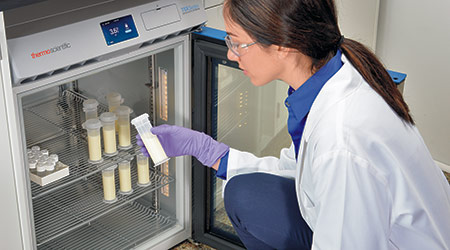As the healthcare industry continues to place a heavy emphasis on delivering quality care, many medical facilities are undergoing massive transformations to ensure next-level patient and provider experiences. In recent years, new regulations have been established to elevate industry standards and create safe, reliable environments. One of the most prominent: USP General Chapter <800>.
According to the Centers for Disease Control and Prevention (CDC), every year, close to 8 million healthcare employees in the United States alone are potentially exposed to hazardous drugs (HDs). When improperly managed, drugs such as hormone agents, chemotherapy medications, and more can cause severe adverse health effects, including both acute and chronic conditions.
Designed to eliminate improper management, USP <800> provides standards for the safe handling of hazardous drugs to minimize the risk of exposure to healthcare personnel, patients, and the environment. Under the new regulations, pharmacies, hospitals, patient treatment centers, and physician practice facilities are required to meet new, more rigorous environmental and safety criteria to reduce potential risks to healthcare workers and their patients.
Refrigeration regulations
One of the key aspects of USP <800> is related to the safe storage of products in healthcare settings, such as cleanrooms. Specifically, all hazardous drugs must be stored and compounded in externally ventilated, negatively pressured areas with at least 12 air changes per hour. Furthermore, refrigerated antineoplastic hazardous drugs must be kept in a dedicated refrigerator, which, if positioned in a negative-pressure buffer room, should have an exhaust adjacent to the compressor to minimize contamination and remove airborne particles generated by the device.
While the December 1, 2019, compliance deadline may seem far away, healthcare systems need to act now. Meeting the regulations could require significant planning and more than $100,000 in construction costs to accommodate legacy refrigerators and avoid pricey penalties. In addition to the extremely high costs, these construction projects can also create a burden on the staff and the overall organization by creating a loud, distracting work environment, while bringing cleanroom operations to a halt. That is, however, unless healthcare systems consider the better, more cost-effective, cleanroom-compliant option: solid-state, compressor-free refrigerators.
Eliminating construction costs & other benefits
Solid-state technology does not utilize a compressor, presenting significant value over traditional refrigerators in meeting USP <800> standards. The top ways solid-state refrigeration can ensure compliance include:
• Removes the need for special ventilation. Unlike compressor-based units, solid-state refrigerators do not have fans or toxic refrigerants, or create vibrations that cause cracks to form, generating and dispersing particulates. Thus, they do not need to be ventilated outside of cleanrooms, and instead, can be immediately placed within them. As a result, solid-sate units eliminate the need for facilities to undergo massive and expensive construction projects to accommodate antiquated refrigeration. Depending on the set up and size of the cleanroom, this can result in ventilation construction savings of more than $100,000.
• Enhances workflow efficiency. To avoid costly renovations, facilities can place refrigerators outside of cleanrooms. However, doing so would significantly reduce workflow efficiency. Personnel would be required to remove their protective clothes every time a product is needed, retrieve it from the external refrigerator, and then don the protective gear to re-enter the cleanroom — a time-consuming process that would hinder operations and enhance overall risks of contamination.
• Lowers heat output. Solid-state cooling delivers 40 percent energy savings and a cooler working environment, when compared to conventional, compressor-based systems. While USP <800> does not include regulations on heat output, USP <797> Pharmaceutical Compounding – Sterile Preparations requires that compounding facilities provide a comfortable and well-lit working environment with a recommended maximum temperature of 20ºC and a humidity level of no more than 60 percent. As compressors can elevate room temperatures, facilities will be forced to spend more energy on cooling operations, putting their HVAC systems in overdrive – unless they implement solid-state refrigeration.
• Reduces cleaning and maintenance requirements. To meet compliance, all surfaces of a cleanroom must be routinely cleaned, and all appliances must be regularly maintained. Solid-state refrigerators feature modern, simple designs that are easier to clean and access, compared to traditional units that use grease and oil, and have hard-to-reach coils. In addition, without a compressor, there are no moving parts to weaken and fail overtime. This results in far less maintenance and upkeep, drastically reducing cost of ownership.
As the compliance date grows closer, healthcare systems need to reevaluate their current processes and determine their best plans of action to meet USP <800> storage regulations. However, before beginning costly, timing-consuming construction projects, facilities should consider all available options, namely solid-state refrigeration. By investing in the next-generation technology, pharmacies, hospitals, patient treatment centers, and physician practice facilities will not only be taking critical steps to ensuring compliance, but they will also be implementing more clean, reliable, and efficient units that will keep up with their evolving storage needs for years to come.
Jerilin Kenney is Vice President / General Manager of Life Sciences and Healthcare at Phononic.

 UF Health Hospitals Rely on Green Globes to Realize Their Full Potential
UF Health Hospitals Rely on Green Globes to Realize Their Full Potential How Healthcare Facilities Can Be Truly Disaster-Resilient
How Healthcare Facilities Can Be Truly Disaster-Resilient TriasMD Breaks Ground on DISC Surgery Center for San Fernando Valley
TriasMD Breaks Ground on DISC Surgery Center for San Fernando Valley Bigfork Valley Hospital Falls Victim to Data Breach
Bigfork Valley Hospital Falls Victim to Data Breach AI-Driven Facilities: Strategic Planning and Cost Management
AI-Driven Facilities: Strategic Planning and Cost Management